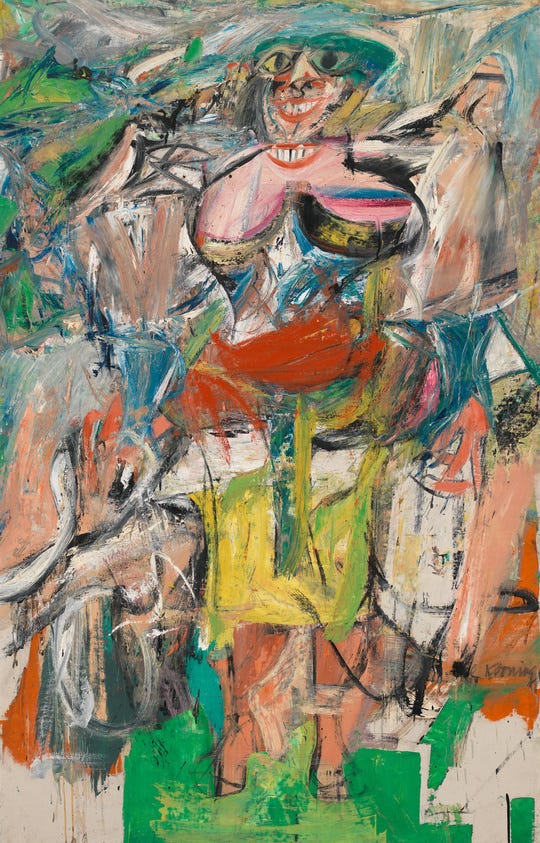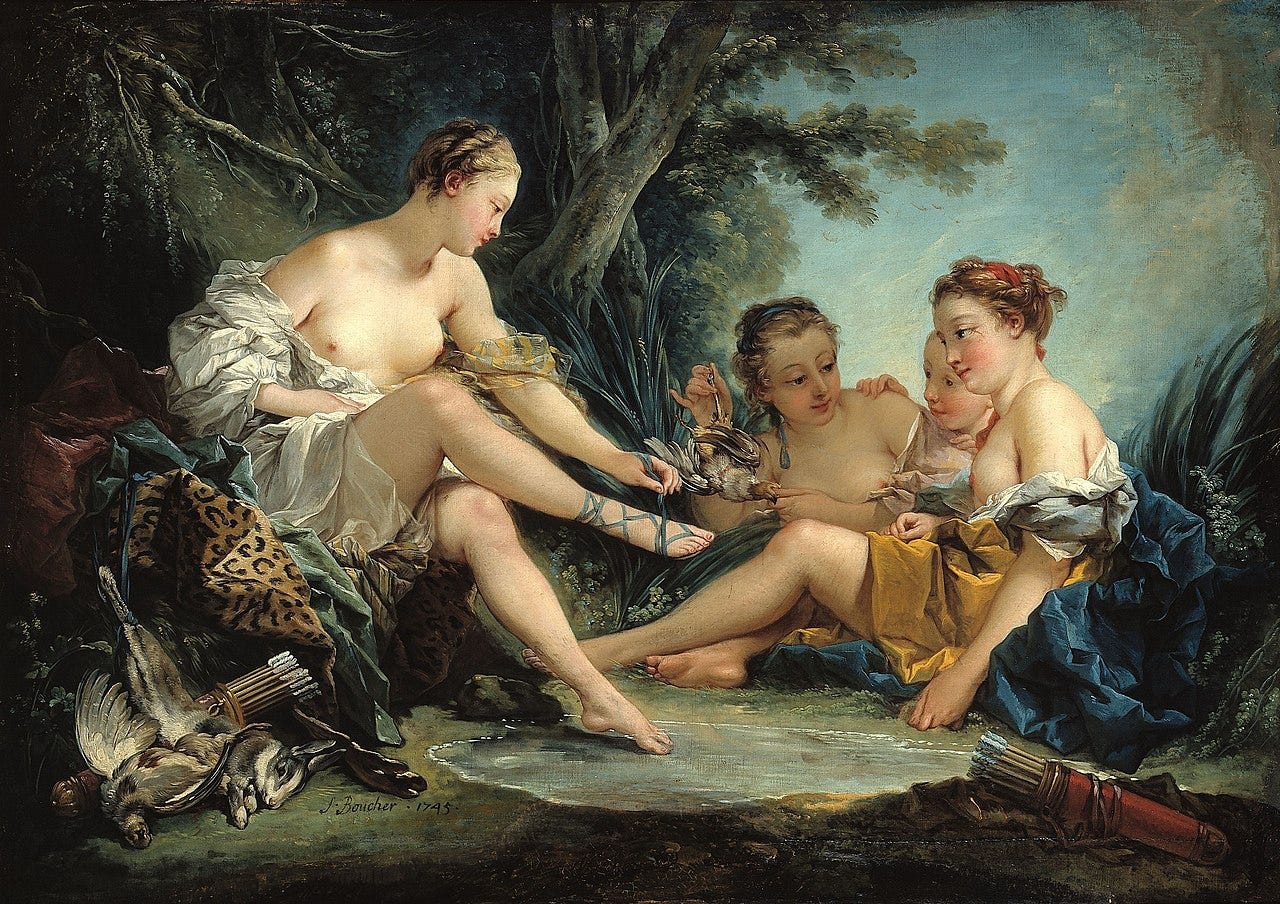Tom Wolfe : Pick Me, Said the Artist
New Day, New Post! Today, I’m hitting pause on the usual topics and diving into something a little different: process. Now, what do I mean by “process”? To me, it’s all about the means, not the end. It’s the journey—the steps that take you from a spark of an idea to a finished result.
When I sit down to write, it usually begins with a feeling. It could be a sudden rush of emotion, a memory that pops up unexpectedly, or even something I experience in the moment. From there, I search for something—a thought, a piece of philosophy, an artwork—that resonates with that feeling. Then, I let it all come together, putting my thoughts into words, and—voilà! I hit "publish," and share it with you.
Process doesn’t just apply to writing. In the world of art, it’s the artist’s method, their way of creating. Yet, there’s more to it. Process also describes how artists gain recognition—how they navigate the labyrinth of fame, fortune, and public perception. Tom Wolfe, renowned author and thinker, talks about this a lot. He calls it “The Dance.” His take on how modern artists rise to fame is fascinating - so much so that I am sharing it with you.
The Painted World
Tom Wolfe was a sharp thinker, a writer who deeply appreciated visual art and had a lot to say about the “dance” artists do to secure their place in the art world. In his essay, The Painted World (1975), he paints a vivid picture of his own art journey and that of the emerging artist. He recalls standing in front of the works of Pollock, de Kooning, Rothko, and others, “squinting, waiting for the visual reward to come to him.” His interest wasn’t just in the artwork itself, but in the process—the artist’s journey to recognition.
Woman and a Bicycle, Willem de Kooning (1952-1953)
Wolfe argues that this journey has evolved over time, becoming more exclusive, more competitive, and, in many ways, more dependent on trends in the market. The artist’s “dance” is their attempt to capture the art world’s attention, hoping to be seen, understood, and celebrated.
From Court to Café
Wolfe traces the evolution of this artist’s “dance” back to two critical shifts in history: once in the 18th century, and again in the 20th century.
In the 18th century, the artist’s world was the royal Court. It was the realm of the elite—patrons who would support an artist’s work in exchange for a certain level of social prestige. Then, with the rise of the bourgeoisie, the artists’ stage shifted to the private salons of the wealthy middle class. These were gatherings of artists and intellectuals, and they were, surprisingly, not all that removed from the bourgeoisie they critiqued. Wolfe calls these artists the “gentlemen”—educated, privileged people who devoted their time to the arts. They did not need to dance for recognition as they were already part of the exclusive elitist circle of the upper class.
Diana After the Hunt, François Boucher (1745)
After the French Revolution, artists moved away from these salons into more vibrant, inclusive spaces: the cénacles. These were informal, bohemian gatherings, often in cafés and bistros, where artists of all classes would come together to talk, debate, and create. This was a rebellious, radical time—artists sought to not just create but to critique the emerging modern world. They lived to shock, challenge, and reject the old bourgeois norms, even as they still hovered in proximity to the wealth and power they critiqued.
A Bar at the Folies-Bergère, Édouard Manet (1882)
The Boho Dance
Fast forward to the 20th century, and you have the modern version of this artistic journey—the “Boho Dance.” Artists of this time lived in neighborhoods like SoHo in New York or Montmartre in Paris, places where the art world and the wealthy elite intersected. They weren’t just creating; they were trying to become names—names that curators, gallerists, and journalists would speak about, write about, and ultimately elevate.
Wolfe describes this period as one where the Bohemian artist was both dismissive of the establishment and desperately trying to be noticed by it. In the 1960s, the “Boho Dance” became a strange back-and-forth between underground artists and museum curators. Wolfe recalls how curators from the Museum of Modern Art (MoMA) would venture into the downtown lofts of up-and-coming artists, looking for something fresh and groundbreaking. But the moment they arrived? The “boho radar” was on. Artists knew they were coming, and a game of seduction—of validation—began.
Artists showed their work with a cool, “I don’t care” attitude, hoping it would make them stand out. Ironically, this stance was a clever way to signal that they did care—that they wanted the validation and fame that came with it.
The Consummation
Eventually, the “Boho Dance” led to what Wolfe calls the Consummation—the moment when an artist breaks through and finds themselves recognized by the higher echelons of the art world. This wasn’t just about talent; it was about originality, novelty, and being picked by the right people. Wolfe notes that success in the art world wasn’t as much about public demand as it was about curators and critics choosing which artists to promote.
Take Picasso, for instance. His rise to fame was a combination of raw talent and pure timing. He spent much of his life struggling, painting in obscurity. Then, after creating set designs for Diaghilev’s Russian Ballet in London, his fortunes changed almost overnight. Suddenly, he was on the radar of the art world’s elite, securing a place in the Savoy Hotel.
Backdrop for a Ballet titled ‘’Pulcinella’’, Pablo Picasso (1920)
The Game is Rigged
Fast forward to today, and not much has changed in the art world. Yes, talent still plays a crucial role, but so does timing, positioning, and—let’s be honest—a bit of luck. Wolfe argues that the idea that public opinion influences which artists succeed is a “romantic fiction.” In reality, it’s the art world’s insiders—the curators, the gallerists, the critics—who dictate what is seen, what is valued, and what becomes “art.”
It’s a world that operates in its own bubble, largely disconnected from the public. Artists aren’t creating for the masses; they’re creating for those who can see them, validate them, and ultimately elevate them. And when they’re picked? The world follows.
Girl Before a Mirror, Pablo Picasso (1932)
The “Pick Me” Paradox
The process through which art becomes “worthy” of being displayed and sold is, unfortunately, exclusive, biased, and often completely disconnected from the public’s taste. It’s a dance—a constant push and pull between the artist, the curator, and the ever-changing currents of the art market. The artist must simultaneously be a performer and a rebel—resisting societal norms while embracing the structures that lead to fame and success.
In the end, to be a Modern Artist is to master the art of not caring, while caring deeply enough to be noticed.






